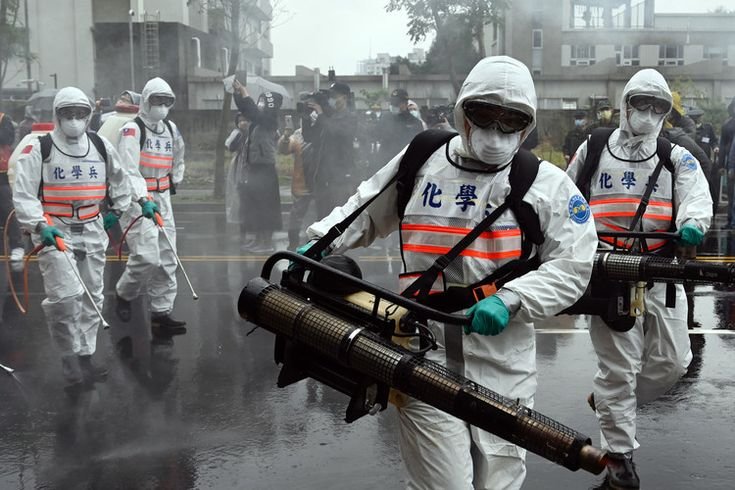Pandemic Diseases: Causes, Impact, and Prevention
Outbreaks occur when a stochastic illness appears in higher-than-expected numbers. This phenomenon may remain localized to a particular area or extend to wider regions. An outbreak can last several days to several years, and sometimes even refer to a single case of an infectious disease as an outbreak. This would hold true for instance if it is an unfamiliar disease, is novel to the community, or has been away from the population for a sufficient amount of time. In this blog we will study underlying causes and symptoms of pandemic diseases.
An epidemic occurs when an infectious agent suddenly intervenes to cause illness in excess of the number of cases usually expected. It normally conveys that the area over which the disease is emerging is much larger than an outbreak.
A pandemic is, therefore, an epidemic which spreads across a country or a continent. It overwhelms a much larger number of people and kills many more than any epidemic would have. WHO declared COVID-19 to be a pandemic once it was officially established that the disease was serious and that it was quickly spreading over a very wide area.

What is a Pandemic Disease?
A pandemic disease is an infectious disease that has spread across a large region, affecting a significant portion of the population. Such diseases can emerge from various pathogens, including bacteria and viruses, often resulting in widespread health crises. The rapid spread of a pandemic disease can overwhelm healthcare systems, leading to serious public health challenges.
The number of lives lost in a pandemic depends on:
- How many people are infected
- How severe of an illness the virus causes (its virulence)
- How vulnerable certain groups of people are
- Prevention efforts and how effective they are
WHO’S Pandemic Alert :
The WHO’s pandemic alert system ranges from Phase 1 (a low risk) to Phase 6 (a full pandemic):
Prevention for Pandemic Diseases
Preventing a pandemic disease from spreading involves several strategies, including vaccination, public awareness, and maintaining hygiene standards. Vaccination helps build herd immunity, thereby protecting those who cannot be vaccinated. Public health campaigns are essential to inform communities about best practices, such as hand-washing and social distancing, to reduce transmission rates. The role of organizations like the WHO is crucial in guiding global responses to potential outbreaks. In the time of any pandemic its necessary to wait for vaccine as it’s easier to make specific vaccines more quickly now than it was several years ago. Once a vaccine is ready, people and groups who are more likely to become ill will get it first.
Meanwhile, you can also do other things to keep yourself healthy:
- Wash your hands frequently with soap and water. If that is not possible, use an alcohol-based hand cleaner or gel sanitizer. Rub it on your hands until dry.
- Avoid touching your mouth, nose, and eyes if you haven‘t washed your hands.
- When you cough or sneeze, put your mouth and nose over a tissue. Then discard the tissue in the trash. Wash your hands afterward.
- Stay away from crowded areas. Stay home if possible.
- Clean and disinfect household surfaces daily.
If you become ill :
- Stay home and away from others.
- Call before going to your doctor‘s office if you need to speak with them. But if you have extreme symptoms such as difficulty breathing, call 911 or seek out an emergency room immediately.
- Use a face mask if you must venture out for medical care. Do not take public transportation, ride-hail, or taxi.
- Get only one person to take care of you, if that is possible.
- Wash your hands frequently, and regularly clean and disinfect household surfaces.
Preparation for handling Pandemic
Economic and social havoc is wrought by a pandemic since it incapacitates a considerable number of people for days either due to illness or to furthering the virus, thereby precluding absenteeism in the workplace.
Things you may do for your family and community before and during a pandemic:
- Set up an emergency contact list.
- Find out about local aid organizations if you need information, support, or health services.
- Determine if you can work from home.
- Plan home educational activities in case school is closed.
- Stockpile on food, water, medication, and supplies.
- Stay as healthy as possible by getting rest, keeping your stress levels down, eating right, and exercising.
Help seniors and neighbors with information and resources.
For more pandemic guidance, contact the CDC Hotline at 800-CDC-INFO (800-232-4636) or visit www.cdc.gov.
Historical Context of Pandemic Diseases
Throughout history, humanity has faced numerous pandemic diseases that have shaped our societies. For instance, the Black Death in the 14th century and the 1918 influenza pandemic had catastrophic effects, leading to millions of deaths. These historical instances remind us how vulnerable we can be to global health threats and the importance of preparedness in combating pandemic diseases.
For Example :
polio was declared a PHEIC in 2014 even though only 482 cases were reported globally in the previous year; this was justified by concerns that polio might break out of its endemic areas and again become a significant health threat globally. The PHEIC status of polio is reviewed regularly and is ongoing, despite the small number of cases annually.
List of pandemic diseases in History :
- The Black Death. Experts think the plague, sparked by bacteria called Yersinia pestis, is to blame for the illness that tore through Europe in 1347-51. An estimated 25 million people died.
- The 1918 influenza pandemic. At least 50 million individuals globally died from flu during the 1918-19 outbreak. It’s commonly referred to as the “Spanish flu,” not because the virus began there but due to the fact that Spain was the first country to make public declarations.
- Smallpox. The smallpox pandemic lasted for hundreds of years. It is estimated that it killed up to 300 million people in the 20th century alone. Due to mass use of vaccines, it was eradicated in 1980.
- HIV and AIDS. The human immunodeficiency virus (HIV), the acquired immunodeficiency syndrome (AIDS), and other diseases have resulted in the deaths of approximately 43 million individuals globally.
- COVID-19. To date, as of 2024, the number of deaths due to COVID-19 is estimated to be over 7 million people globally.

In conclusion, understanding pandemic diseases and their impacts is vital for fostering a healthier future. By learning from past outbreaks and implementing prevention strategies, we can work towards mitigating the threat of similar diseases in the future.
FAQ’S
IF YOU WANT TO KNOW ABOUT CLIMATE CHANGE PROGRESS

